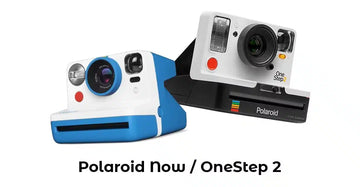Mastering the Fujifilm Instax 210/300: A Step-by-Step Guide to Loading Film for Stunning Instant Shots
par Дашка Шипунова sur Jul 30, 2025

Instant photography has experienced a remarkable resurgence in recent years, with the Fujifilm Instax line of cameras leading the charge. Among the most popular models in the Instax lineup are the Instax 210 and Instax 300, both of which offer a wide format for capturing larger-than-life instant prints. However, properly loading film into these cameras can be a bit of a challenge, especially for newcomers to the world of instant photography.
In this comprehensive guide, we'll walk you through the step-by-step process of loading film into your Fujifilm Instax 210 or Instax 300 camera, ensuring that you're ready to capture stunning instant shots with ease. Whether you're a seasoned Instax enthusiast or just starting your journey into the world of analog photography, this article will provide you with the knowledge and confidence you need to master the art of film loading and unleash your creative potential.
Preparing Your Instax Camera
Before we dive into the film loading process, it's important to ensure that your Instax camera is properly prepared. Begin by turning off the camera and locating the film compartment, which is typically located on the back of the device. Gently open the film compartment door, being careful not to touch any of the internal components.
Introducing the Instax Wide Film Pack
The Instax Wide film pack is specifically designed for use with the Instax 210 and Instax 300 cameras, offering a larger format than the standard Instax Mini film. The film pack itself is a rectangular cartridge that contains a stack of individual film sheets, each with a protective black cover.
When handling the film pack, be sure to avoid touching the sensitive film surface, as this can lead to unwanted marks or blemishes on your final prints. Instead, hold the pack by the edges or the cardboard frame surrounding the film.
Inserting the Film Pack
With your Instax camera open and the film pack in hand, it's time to begin the film loading process. Carefully insert the film pack into the camera, aligning the yellow line on the film pack with the corresponding yellow line inside the film compartment. This ensures that the film is properly oriented and will eject correctly when you take a shot.
Once the film pack is in place, gently close the film compartment door, making sure that it clicks securely into place. At this point, your camera is ready to power on and begin shooting.
Ejecting the Film Protector
Before you can start taking photos, you'll need to eject the black cardboard protector that covers the first film sheet in the pack. To do this, simply press the shutter button once, and the protective cover will be automatically ejected from the camera.
It's important to note that this initial ejection of the film protector does not count as your first exposure, so you can safely discard the black cardboard without wasting a precious shot.
Capturing Your First Instax Wide Shot
With the film pack loaded and the protective cover ejected, your Instax 210 or Instax 300 camera is now ready to capture your first instant shot. Compose your scene, press the shutter button, and watch as the camera processes the image and ejects the finished print.
Remember, the Instax Wide film has a slightly longer development time than the standard Instax Mini film, so be patient as the image gradually appears before your eyes. Once the print is fully developed, you can peel off the protective cover and admire your handiwork.
Maximizing Your Instax Wide Film
To ensure that you get the most out of your Instax Wide film, there are a few additional tips and tricks to keep in mind:
- Avoid Overexposure: The Instax Wide film is sensitive to light, so be mindful of your shooting conditions and avoid direct sunlight or other bright light sources that could lead to overexposed prints.
- Experiment with Composition: The wide format of the Instax Wide film offers a unique perspective, so don't be afraid to experiment with different compositions and framing techniques to capture your subjects in a visually striking way.
- Store Film Properly: When not in use, store your Instax Wide film in a cool, dry place, away from direct sunlight or heat sources. This will help to preserve the film's quality and ensure consistent results.
- Explore Accessories: Consider investing in accessories like close-up lenses or filters to expand the creative possibilities of your Instax 210 or Instax 300 camera. Amazon offers a wide selection of Instax-compatible accessories to enhance your instant photography experience.
Comparing the Instax 210 and Instax 300
While the film loading process is largely the same for both the Instax 210 and Instax 300 cameras, there are a few key differences between the two models that are worth considering:
Instax 210
- Larger, more ergonomic design for comfortable handling
- Automatic exposure control for consistent image quality
- Optical viewfinder for precise framing
- Slightly slower maximum shutter speed (1/60 sec) compared to the Instax 300
Instax 300
- Compact, lightweight design for easy portability
- Manual exposure control for greater creative flexibility
- Electronic viewfinder for a more modern shooting experience
- Faster maximum shutter speed (1/400 sec) for capturing action shots
Ultimately, the choice between the Instax 210 and Instax 300 will depend on your personal preferences and shooting style. Both cameras are capable of producing stunning Instax Wide prints, so the decision may come down to factors like size, weight, and the level of manual control you desire.
Troubleshooting Common Issues
While the film loading process for the Instax 210 and Instax 300 is generally straightforward, there are a few common issues that you may encounter. Here are some troubleshooting tips to help you overcome these challenges:
Film Jamming or Misfeeding
If you experience issues with the film not ejecting properly or getting stuck in the camera, try the following steps:
- Ensure that the film pack is properly aligned and inserted into the camera.
- Check for any obstructions or debris in the film compartment that could be causing the jam.
- Gently remove the film pack and reinsert it, taking care not to force it into place.
- If the issue persists, consult the camera's user manual or contact Fujifilm support for further assistance.
Inconsistent Image Quality
If you notice variations in exposure, color, or sharpness across your Instax Wide prints, consider the following troubleshooting tips:
- Verify that the film pack is not expired or damaged, as this can affect image quality.
- Check the camera's settings, such as the flash mode and exposure compensation, to ensure they are optimized for your shooting conditions.
- Clean the camera's lens and film compartment to remove any dust or debris that could be interfering with the image capture process.
- Experiment with different shooting techniques, such as adjusting your distance from the subject or using the camera's built-in flash.
Embracing the Instax Wide Experience
Loading film into your Fujifilm Instax 210 or Instax 300 camera may seem daunting at first, but with a little practice and the guidance provided in this article, you'll be well on your way to capturing stunning instant shots with ease. Whether you're a seasoned Instax enthusiast or just starting your journey into the world of analog photography, mastering the film loading process is the key to unlocking the full creative potential of these remarkable cameras.
So, what are you waiting for? Grab your Instax 210 or Instax 300, load up some Instax Wide film, and get ready to embark on a captivating instant photography adventure. With the right techniques and a bit of experimentation, you'll be producing breathtaking Instax Wide prints in no time. Happy shooting!
For more information on the Fujifilm Instax 210 and Instax 300 cameras, as well as a wide selection of Instax-compatible accessories, be sure to check out our recommended products on Amazon.




